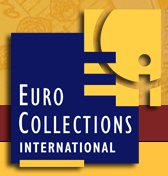
Austria 2013 5€ Viennese Waltz Silver BU
The obverse of the nine-sided coin is the standard 5-euro design, with the denomination encircled by the shields of the nine federal provinces of Austria. In the center is the face value of 5 euros. Mint engraver Helmut Andexlinger designed the obverse.
Early mentions of dance movements relating to the waltz date back as far as the 16th century. But it was not until the late 17th century in the imperial court of Vienna that an early form of the waltz really took hold. Starting out as a simple 2 beat step it evolved into the more complicated but very graceful ¾ time. In the 18th century in southern Germany and Tyrol the less graceful but probably more fun dance called the Laendler that swooped couples around the dance floor was very popular. In the late 18th century the two forms of dance merged and the nobles dropped the more sedate minuet in favour of the early form of the waltz. The stately imperial court succumbed to the scandalous requirement of the closed position with your partner in order to waltz together, which was simply not done during a dance in earlier years. The Viennese Waltz, with its light and fast in style, made it more fun to participate in a stately and reserved environments, helping to spread its popularity in the late 18th century all over Europe. Huge dance halls that could hold thousands of dancers at a time were constructed and some social commentators even consider the Viennese Waltz to be the most important ever development in the history of dancing. Thanks to the recent renaissance in ballroom dancing around the globe, though more than 200 years old, the dance is still very much alive and well today.
Austria is of course also famous for Johann Strauss known as the “Waltz King.” He composed several hundred waltzes at a time when the waltz was very popular. Most famous is probably the Blue Danube Waltz, known the world-over as the encore finale performed every New Year’s eve during the Vienna Philharmonic Orchestra’s New Year’s Eve worldwide concert. Within Austria this waltz is played at the stroke of midnight on radio stations and television channels to ring in the New Year. In some ways it has become Austria’s unofficial national anthem.
| The 5 euro silver coin has a diameter of 28.5 mm, contains 8 grams of fine silver, a total weight of 10 grams and has a fineness of 800. The coin is available only in special uncirculated quality and will have a maximum mintage of 50,000. Of this total mintage, and for the first time ever, 5,000 coins will be available in an English-only package. The remaining 45,000 will be available in a German-only folder. Each of these coins is vacuum-packed in a colorful, informative and winter-themed blister pack. |  |





No comments:
Post a Comment